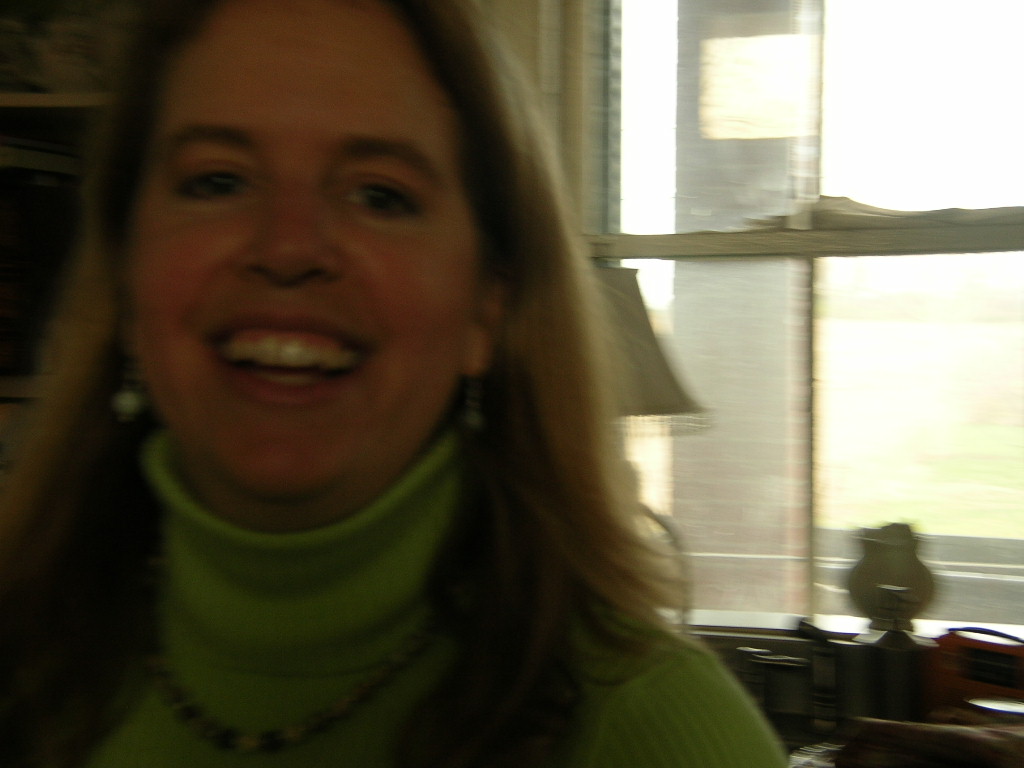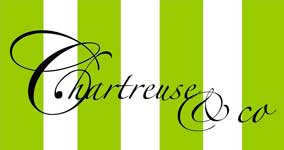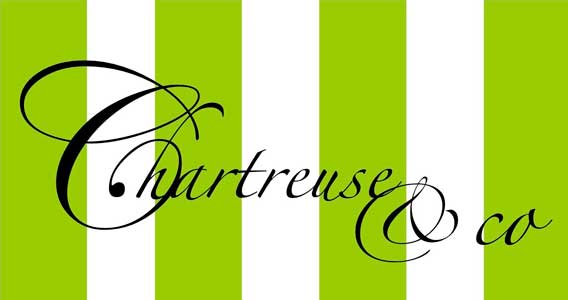
Katherine Crum, daughter of Howard and Virginia Crum, writes articles on the history of the Chartreuse & co. property, family, and her experiences growing up in a family business.
In my family, we’ve always joked that we – the Crums (Chartreuse founder Virginia’s immediate family) – were the ‘& co.’ function of ‘Chartreuse & co.’ I was ten years old when we moved to my great-grandmother’s house and eleven my mom had her third baby: a business that would save the family farm. At that time, Clifton-on-the-Monocacy (which was the original name of both the house and farm) was a sad relic of former glories: the verdant pastures which had once stretched emerald fingers to the Monocacy had been reduced to a parcel of land hovering on the lap of Buckeystown Pike; and even domestic pleasures, such as the green-painted swing set, that had once entertained my mother and her sisters for hours on end, had been mangled by a fallen tree and overgrown in an immense thicket worthy of Sleeping Beauty, herself. What did remain were the farm buildings which, since the ‘50s (my grandfather recollects a wild reconstruction in which the tenant house was pulled by mules walking in gradual circles to its new site), had all inhabited a relatively small plot of land.
The house, itself, was in need of a great deal of tender loving care (many the hours we spent scrubbing floors and power washing the immense 60s-office-building-style windows on the addition when we first moved in – little less the issue of the house raining indoors when it rained outdoors…), but its condition was perfectly spotless in comparison to the immense barns that hunkered together beyond the two houses. Those farm buildings had long been converted to storage by the time we moved in, and muck and grime were everywhere. I remember, in fact, that after being in the barn for any amount of time at all, if you blew your nose, the residue on the tissue came out black. The insurance company told my parents, upon purchase of the barns, that they were attractive nuisances and best torn down, but my parents saw another option. All across the county, many such buildings were facing the same fate and, crumbling amidst their ruin were the traces of our county’s history. Our bank barn dates back to the 1700s and, so ancient is its construction that wooden pegs were used rather than nails. Our dairy barn – the second-newest building on the premises – began its construction in the 1920s and was expanded by my great-grandfather in the 1940s (you can see the shift in construction at what is now the center of the barn if you stop and look). Wherever you look, nuggets of the past and the people who moved through it percolate, making these buildings more than the brick and mortar that holds them together, and transforming them into monuments of the past: artifacts of all those who have walked between their walls or stopped to touch them, as someday they may well stand in recollection of you and of me. Rather than demolishing these priceless barns, my parents chose to save them and, out of that, a decision was made that would shape what has, so far, been the vast majority of my life.
The business has gone by many names – Mille Fleur Cottage, Trellis, Fleurish – but the one that stuck you already know. We’re asked about the origin of the name Chartreuse & co. fairly often. It’s the name given to that electric shade of green which can be seen in the Chartreuse liqueur (a heady herbal concoction, at once refreshing and powerful and not for the faint of heart) from which it derives its name. The liqueur, itself, is named for the mountains in France of the same name where it was first made, but the christening of the mountains remains – for me, at least – shrouded in mystery (apparently based on an ancient Gaulish word of unknown meaning). What also stuck? The proud ‘& co.’ moniker my family has adopted. It’s been well-earned, too, I may say.

There are many things I recall from a childhood spent in and around the home décor and lifestyle business, but most of them involve my sister, Sasha. She and I are a mere year and twenty days apart and we did everything together. Many were the hours spent reading our textbooks under the tree that once cradled the bank barn (sadly, it was blown over in a storm a few years ago, but Weathered by SEE has lovingly erected a sort of a shrine to its memory in the form of a tall wooden teepee on the spot) while my mom painted away on the furniture we would sell in what we all laughingly termed ‘the painting villa’ – which is now Chartreuse’s Spring House. While my mom diligently hunted out new and old (mostly old) furnishings to restore, Sasha and I spent our time making up games to play and stories to tell, painting and hauling furniture, and doing homework of all kinds. My mom talks often about two matching aprons she lovingly stitched together for us from vintage fabric and ribbon, but what I recall more readily were the moments of misadventure, like the time we loaded a desk so immense into our truck that my sister sat in its footwell for the ride home, or another occasion on which – while painting a floor for a design house – Sasha accidentally painted herself into a corner (a delightful story with which I shall most certainly regale you on another occasion). For me, Chartreuse isn’t just a business, it’s also a home. When I walk along the path, I look into the brambles and remember the Blair Witch Project spoof we and a group of our friends undertook (given that this project was undertaken by a group of 14 years olds with only flashlights and a c. 1994 camcorder in 2005, it went about as well as you might expect) just as I remember a particular cabinet we foolhardily hauled out to the same spot to dry in the sun after a fresh paint job. For me, the two aspects of life are so closely intertwined, they are inseparable, but with that comes a gift: my sister and I grew up here, my mother and her sisters grew up here, my grandfather and his brother grew up here and, now, seeing all of you with your families, I can’t help but think that other children are also in part growing up here, too.
As I got older, my family was able to tackle restoring the barns (after years of diligently socking away enough capitol to begin the exciting project). First, we cleared out the barn – both of the random storage items accumulated across the decades since on-site milking had ended on the property and the gunk that had come with that regime – and scrubbed it spick and span. Next, came the issue of its uneven floors. The edges of the barn were raised – long walkways that stretched the length of the barn. Beside it were dug out huge troughs which followed the same trajectory and beyond that, on a lower level, was a dirt floor where the cattle were once meant to have stood. This all had to be filled in up to the level of the cement walkway in order to have the requisite level floor, so my mom called a concrete company asking for an area of ten-inch-deep concrete.
A stunned silence followed this request, the receptionist who had answered her call seeming to process this information before breathing out, “Are you building an airport?”
Word to the wise: ten to twelve inches of concrete is required for the landing strip of a jet plane…and not much else. (So it’s gravel filling in the gap, now, below your feet, the concrete, and the dirt far below as you stroll through the dairy barn.) The entire process went this way: an optimistic blend of hope and confusion – all the spice in life required to make the journey interesting. Particularly at the dawn of this new decade, there’s a sweetness to looking back in time to those days.

The dairy barn opened for business in 2008 (right as I was trundling off to the State of Virginia to begin college), it’s doors flung wide as Chartreuse & co. at long last. At that time, we sewed together drop cloth to make curtains that spanned the width of the barn (as my mom was the only dealer present at the start) so most of the empty barn was curtained off – making the heating and cooling simpler than it is, now (I say, glancing out my window towards the barn and its new immense industrial fan…). Slowly, the curtain receded as new dealers began to join us, more and more and more until today we stand proud amongst thirty other faces, all of whom work to keep this priceless Frederick county tradition alive. Clifton-on-the-Monocacy, Chartreuse & co., Fleurish…whatever you may call it: it shines upon our little hillock, as happy and useful as it was on the day in the early eighteenth century when the first barn (and original house) were constructed. To quote Mr. Fezziwig in the 1951 film Scrooge, one spends a lifetime building a business “to preserve a way of life that one knew and loved.” That’s just as true for us today in 2020 as it was in 1951, in 1843 when Dickens penned the first lines of A Christmas Carol, or even in the early 1700s when Clifton-on-the-Monocacy was first christened, and it is a tradition we, the & co. are proud to carry on, today.
-Katherine Crum

